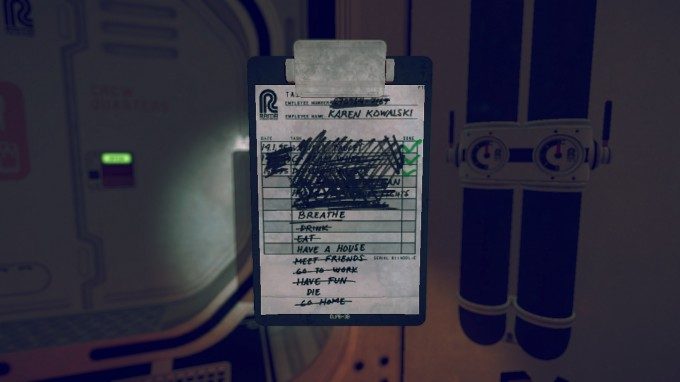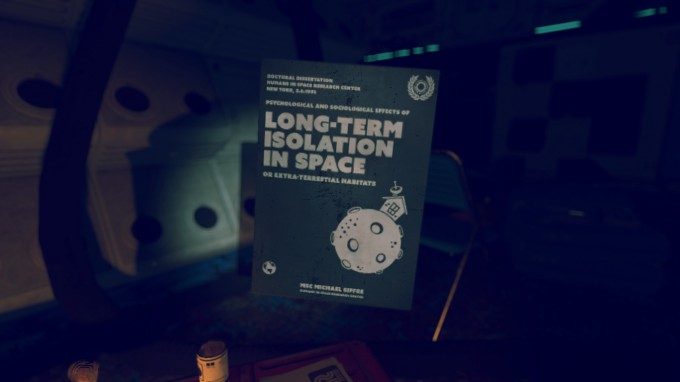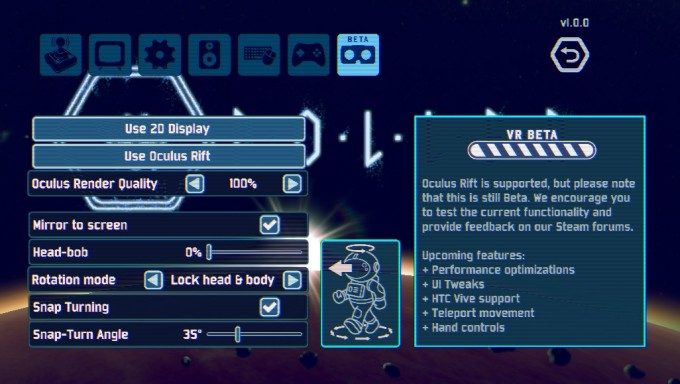It’s 1995. The world looks a little different after the failed assassination of JFK. In a bid to open-source all US and Soviet space patents, the Space Race booms into a new era of long-haul interplanetary travel—spearheaded of course by a friendly mega corporation; RAMA Industries. Something’s happened to one of RAMA’s experimental bases on Titan, and it’s your job to find out.
Advisory: Pollen is currently in VR beta. The official VR release is coming to HTC Vive and the Oculus Store in the coming months. For this reason we chose to omit any form of scoring.
Pollen, a first-person exploration game from Mindfield, puts you in the space boots of a new recruit assigned with the task of reestablishing connection with a deep space research facility, an outpost on Saturn’s largest moon Titan. Borrowing heavily from classic names in sci-fi history like Isaac Asimov and Arthur C. Clarke, Pollen weaves a story through the audio tapes and personal relics of a crew gone missing. Much like breakout success Gone Home (2013), Pollen makes you paw through these relics to uncover the story bit by bit.
The game’s retro-future aesthetic is positively gripping, and features everything from punch cards to typewriters in a setting that looks straight out of 2001: A Space Odyssey (1968). And there’s a treasure trove of items between you and your quest to discover what the infamous ‘Entity’ is, what it did with the crew, and why it leaves behind a rip in reality—one that you regularly travel through.

Traversing through the rip in space reveals an alternate universe where the station is in shambles—something you’ll have to discover for yourself—but the opportunities here are many. Like Gone Home, the game lies in inspecting everything that looks important, thankfully highlighted so you don’t miss the most obvious ones (purists can turn off the function entirely). With an alternate universe at your fingertips—activated by finding key items—you’ll be able to illuminate the entire mystery by listening to every tape and unceremoniously ransacking every corner of the station, from an ominous-looking research lab to the intimate quarters of the lost crew. While not every clue forwards the narrative specifically, you’d be surprised at how much depth you can wrench out of the game from looking at family pictures, and hearing the internal personal struggles of a crew slowly succumbing to whatever it is ‘The Entity’ has done to them. As they say, the devil is in the details.
Memos, clipboards, audio cassettes, and key cards litter the whole facility, and all of them are just begging to be picked up by hand and examined naturally. There are moments when picking up items is pretty janky, and fumbling a tape, or accidentally throwing an important paper across the room was an occasional occurrence. Because you’re in a VR headset, you target items with your gaze-reticle and then pull the right trigger on your Xbox controller—something that will be better served with “hand controls” (presumably Touch) when Pollen officially releases on the Oculus Store in the next few months.
The narrative itself is definitely treading in homage territory, as seasoned students of hard science fiction will likely be able to pick out concepts from fan favorites like Clarke’s Rendezvous with Rama (1973), Stanley Kubrick’s film depiction of Clarke’s 2001: A Space Odyssey, or the more recent films Contact (1997) and Moon (2013). This is accomplished in a lovingly obvious way (RAMA Industries) that makes you feel like you’re walking into familiar territory, but without the staleness of repeated tropes. That said, I really enjoyed the 2+ hours the game had to offer, although I do prefer longer gameplay experiences personally.
See Also: Review: ‘Technolust’ is a Gritty Cyberpunk Adventure That Leaves You Begging For More
Immersion & Comfort
There are some pain points, some of which you can minimize with the games extensive settings menu, and others that you’ll just have to deal with. Pollen can be very pretty on medium and high settings, but if you’re dealing with Oculus’ recommended specs (GTX 970 or AMD 290), you may need to crank down on a few things to get an optimal result—at least until the performance optimizations come in with the official VR launch. Going ‘bare bones’ on the presets and dialing down the render quality can leave you with a flat-looking grainy mess, so you’ll need to periodically pause the game to figure out what mix you need to hit a constant frame rate.
Comfort wise, Pollen offers the standard ‘snap-turn’ VR comfort mode, but with variable angles so you can customize your experience. You can thankfully decouple head and body movement, and walking/running speeds aren’t outside of the norm—making for a more natural playing experience. Since the game isn’t built from the ground-up for virtual reality, there are a few level design issues that might irk a user susceptible to simulator sickness. Stairs are everywhere, which can really lurch your stomach if you aren’t careful—and jumping is sometimes required, which also fits in the no-no list of first-person VR movement.
Natural input devices and room-scale gameplay could significantly increase the presence felt in Pollen, although it already benefits from rock solid game play and a story that will keep you guessing.
We’re hoping the official release of the game’s VR function, which will accompany ‘hand control’ support (presumably Touch), HTC Vive support, performance and UI fixes will do this title more justice. You can download Pollen (Oculus only) on Steam right now.












